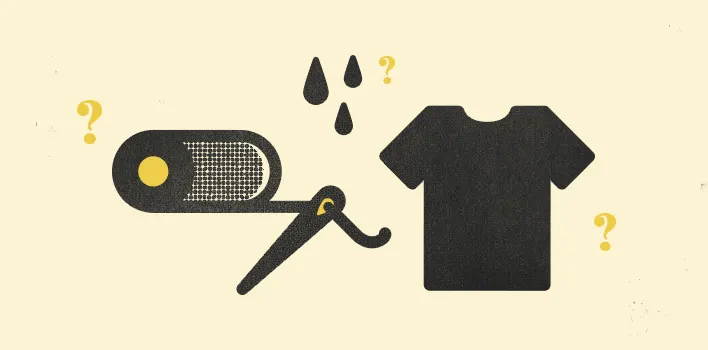How to Find a Manufacturer
- 4 August 2016
- BySarah Anderson
- 7 mins. read

Whether you're making each product in your living room or stocking studio shelves with out-sourced inventory, each of us has to find the right suppliers to work with our business.
You might be looking for anything from raw materials, to packaging, to finished products made from your designs, and now you're on the hunt for the perfect partners. We're here to help you get started.
Is manufacturing for you?
Before you commit to the idea of outsourcing your work to a manufacturer, weigh the pros and cons. It may give you more time for designing products, updating your store, and generally running your business. But you'll also lose a little bit of control, spend more money upfront, and risk having unsold products on your shelves if you have to place a large order.
Considering a manufacturer is also a good time to think about your company values:
Is it important that you work with locals?
What about working within in your country?
Will you ask about worker conditions?
Are the raw materials sustainable?
Does your supplier have a good reputation?
Maybe you want to find your footing and get cash flow figured out first, but it never hurts to start thinking about your priorities sooner rather than later.
Before taking the leap to full-scale manufacturing, consider ways to streamline your current production. Form an assembly line, make a few more items than you need to fulfill orders so that you have some back stock for next time, or hire a friend for an hour or two to help pack up orders. Over time, you'll get a feel for what makes the most sense when scaling up your operations.
You can also look into on-demand production as an alternative to traditional manufacturing. You'll pay a little more for each item this way, but places like Art of Where and Printful will integrate with your shop to print and ship the specific products ordered by your customers.
If you've looked into alternatives and decided that manufacturing is the right fit, then it's time to get to work finding the right collaborators.
Prepare for some detective work

As you've gotten more passionate about your designs, chances are that you've seen similar products (or products using the materials you need) sold by other companies. We've heard that "it never hurts to ask," but sometimes a cold email isn't the best way to start.
Here's a quick test: Are you close friends with the founder, or an employee who works with suppliers? Send that email! Will this be the first contact you have with the company? Hit the brakes and do a little research first.
These companies are busy, and they've worked hard to build relationships with their suppliers. They might not be ready to share info with a stranger, but you can find clues to help you on your own search.
Here's one way I did it: A year ago, I designed a line of gift wrap for my Big Cartel Employee Art Grant project. I had a little knowledge about how to get it produced, since I used to work at a print shop, but was totally stumped about what to wrap the gift wrap around. I searched "cardboard tube," but couldn't find exactly what I had in mind. Months later, a stationery brand that I follow on Instagram posted a photo of a bunch of tubes, just like I'd been looking for. The caption said something like, "Restocking our wrapping paper cores." Just changing my search term to "cardboard core" was enough to lead me to exactly what I needed.
Basically, start by learning everything you can. Be an enthusiastic member of the community. Look for technical terms that can help you in your search.
Still Stumped?
If you've searched online, scoured product descriptions, followed brands you respect on social media, and can't make progress, it's time to ask for help.
You've already immersed yourself in the community, so write with genuine enthusiasm and remember these guidelines:
Be concise and sensitive to using up their time.
Keep your request simple by asking the bare minimum.
"Can you suggest a certain type of printing that's best for posters?" may get a better response than "What's the name and phone number of your printer?"
Be appreciative, even if they can't give you specific manufacturing details.
Start the conversation

Once you've found a manufacturer, you're ready to find out if they fit in with your plans. And don't hesitate to contact several suppliers until you find the right one. These questions will help you narrow down the list:
Where are the items manufactured?
What is your minimum quantity?
What is the price per piece?
Are there price breaks for buying larger quantities?
Are there separate shipping costs?
What is the turnaround time?
What will be the price for reorders?
Does the item come with your branding on it, or will it be "white-labeled"?
Stay flexible on some of those terms, like the minimum order quantity, but don't forget your priorities. If you've always proudly advertised "Made in Melbourne," now may not be the time to switch to overseas manufacturing. If the manufacturing cost is $10 for an item you sell for $12, you've got some pricing details to work out. Manufacturing, just like pricing, can tell an important story about your brand.
Placing the order

Now that you've found the manufacturer that's right for you, and are comfortable with how their process fits with your business, prep everything you need to place your order. The exact requirements will vary depending on products and company, but you should be ready with design files that fit your supplier's specifications, as well as these kinds of details:
Quantity
Sizes
Colors (Pantone, CMYK, hex, etc.)
Packaging needs or other finishing details
Delivery date
It's a marathon, not a sprint
It can be intimidating to start sourcing materials and products, but it's an exciting step in the growth of your business. It's also an important time to think about your company's priorities: cost vs. quality, local vs. global, and the the amount of control you want to keep on each aspect of production. Take your time to think it all through, and then move forward with confidence.
More resources
Maker's Row connects you with manufacturers and has free classes.
You can find manufacturer directories at ThomasNet, Kompass, and Alibaba.
Martha Stewart has an article filled with questions for you to keep in mind.
4 August 2016
Words by:Sarah Anderson
Tags
- Share